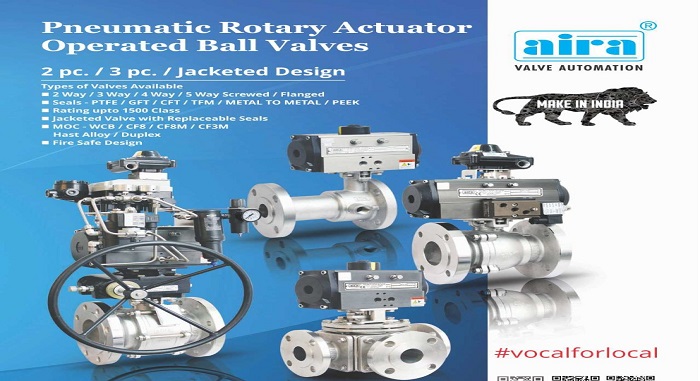Pneumatic Actuated Ball Valves play an important role in controlling the flow of either a gas or a liquid, thus finding use in hundreds of different industries. But, every ball valve manufacturer knows that there are at least 6 important kinds of valves.
So, let’s get ourselves familiarized with them too…
High Pressure Ball Valves
These are quarter-turn ball valves which make use of a floating ball to control flow. The valve remains open only when the holes in the ball are in line with the flow; they remain closed when, using the valve handle, you pivot them at 90 degrees.
Two Piece Ball Valves
Most industries use these 2-piece ball valves. The name itself suggests its construction; while the first piece has one end connection as well as the body, the second one fits right into the first and includes the second end connection. The latter one also holds the trim in place.
Three Piece Ball Valves
Just as the name suggests, this one consists of 3 pieces. There are 2 end caps and a body. You will find the end caps to be typically welded or threaded to the pipe. The main body section is generally easily-removable so that it can be cleaned or repaired without having to remove the end caps.
Stainless Steel Ball Valves
Stainless steel is usually more preferred by ball valve manufacturers than brass. It’s because stainless steel ball valves tend to hold up much better to harsher water types, which ensures a longer-lasting valve. Also, as a material, it’s known to be much more resistant to corrosion than brass. This is an important quality because valves are meant to open and close, and corrosion can cause a ball valve to either break or simply render it unable to move.
Wafer ball valves are cavity-free – meaning, there is no cause for disturbance because of residual products polymerizing, crystallizing, and thus affect the valve functioning. These come with a push-fit insert design which furthers the distance between the actuator mounting flange and the vessel. It makes the isolation of the vessel and the ball valve automation more convenient.
UPVC Ball Valves
These ball valves come with a durable design, manufactured using a top-grade material – Virgin UPVC. With proper finishing, manufacturers ensure these valves are leak-free and give out a smooth performance. These valves find wide applications in domestic, plumbing, and irrigation purposes, to generally ensure a seamless flow control in the water supply lines.
